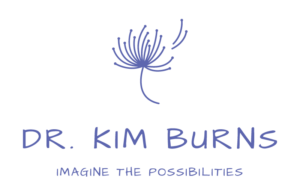I have a terrible memory.
I envy people who read a book and can relay the author’s ideas or the plot years later. I just don’t have those brain cells available to me. Hence, the commonplace book.
I do remember (ha!), reading Steven Johnson’s Where Good Ideas Come From: The Natural History of Innovation, and learning about this idea of a commonplace book. I had never heard of it before.
In his chapter on the slow hunch (those vague, niggling ideas that aren’t yet fully formed), he writes about the importance of writing everything down as the secret to cultivating slow hunches into fully-fledged ideas. It’s the same idea of keeping a research journal.
Over time, your ideas slowly form into something coherent and usable.
Johnson cites Charles Darwin’s practice of keeping meticulous notebooks where he iteratively explored what he was learning about evolution. He would document his observations, write his thoughts about them, jot down new ideas, read his previous notes, generate new ideas, and so forth and so on.
Johnson writes,
“Darwin’s notebooks lie at the tail end of a long and fruitful tradition that peaked in Enlightenment-era Europe, particularly in England: the practice of maintaining a ‘commonplace’ book. Scholars, amateur scientists, aspiring men of letters – just about anyone with intellectual ambition in the seventeenth and eighteenth centuries was likely to keep a commonplace book. The great minds of the period – Milton, Bacon, Locke – were zealous believers in the memory-enhancing powers of the commonplace book. In its most customary form, ‘commonplacing,’ as it was called, involved transcribing interesting or inspirational passages from one’s reading, assembling a personalized encyclopedia of quotations.”
Johnson, S. (2010). Where Good Ideas Come From: The Natural History of Innovation. p. 84. NY: Riverhead Books.
I started my first commonplace book in 2016, soon after I read Johnson’s book. The idea of writing down the golden nuggets of my reading appealed to me, mostly for the assistance it promised to provide in remembering them. I have found it useful when preparing content for workshops, articles, and blog posts.
It’s especially useful for books I borrow from the library. For books I do own, sometimes it is easier to check my commonplace book first instead of flipping through the book’s actual pages. I also can geek out over this personal history of my reading, fondly remembering the times and places where I read and wrote my notes.
I mostly keep notes on the nonfiction books I read. Occasionally, I’ll write down a good quote from a novel. The most recent novel I included was Fredrik Backman’s Anxious People.
“She gathered the wreckage of her feelings into an expression of derision and went back into the apartment.”
Backman, F. (2019) Anxious People. p. 112
Isn’t that an exquisite sentence? I also include notes from blog posts, podcasts, and newspaper articles.
So how do I keep this commonplace book?
First, I get a really good Moleskine notebook. I’m on my second one and it is amazing – it has page numbers! And a place for a table of contents! But I digress. I could (should) write a whole other post on my love of notebooks. But really, any notebook will do.
I start by writing the title, author, and publication year of the book. Then, I write the date and location of when and where I’m writing my notes. I don’t always document my notes right away, which can cause me to get backed up. That’s okay, though. There’s no rush.
Today, I wrote up my notes from two books I read recently.
One was Sacred Rest. The other was The Crossroads of Should and Must: Find and Follow Your Passion.
I wrote my notes for Sacred Rest by listing the page number first and then the quote. That resulted in a less-than-inspiring format. For Crossroads, I listed the chapter number and title, then the selected quotes followed by the page number. That format was more appealing and easier to skim for themes.
For some books, I write down just a few useful quotes that spoke to me. For books that I love, I write down so many notes that I’m practically transcribing the entire book. That isn’t helpful, but sometimes it happens.
The idea is to capture the essence of the book and document useful quotes that I can use later
For books that I read on my Kindle, I have considered just printing my notes from my Kindle desktop app. But, the process of handwriting the quotes helps me learn and remember the content.
Research has shown that writing by hand results in more reflection and better memory. Therefore, I slog through the highlights and notes I write in the margins of the book and write them down in my notebook. In addition to quotes, I also note my thoughts and reflections on the topic.
In Johnson’s book, he talks about his own and other authors’ elaborate indexing schemes so they can locate their quotes and reflections. I use a very simple system. I have a list of the books and the page they are recorded on.
I also determine the category or theme of each book. I denote these by using a #. I keep a list of the themes on a separate page in the notebook and indicate all of the page numbers that correspond with that theme. With these two lists, I can easily see the books I’ve annotated, the themes covered in the notebook, and where they are located.
Commonplacing is a practice I enjoy. It helps me reflect on what I have learned through my reading. It’s a contemplative and quiet activity that can be a contrast to a busy week.
How do you remember what you read?
I would love to hear about it!
Email me at [email protected] or connect with me on Instagram at @drkimburns.
You can also sign up for my newsletter.
Have a fabulous week!

